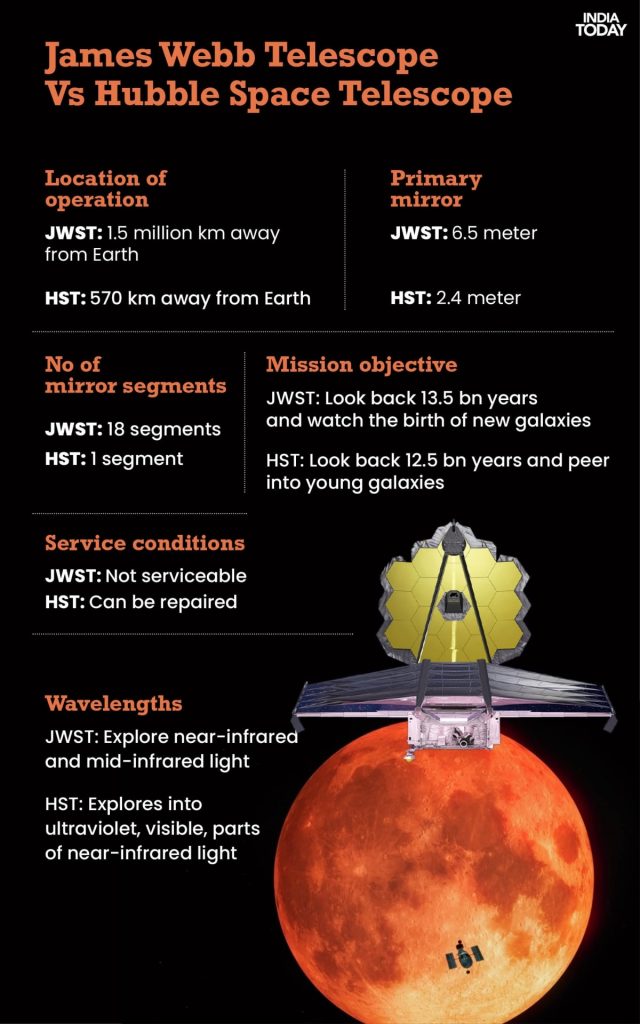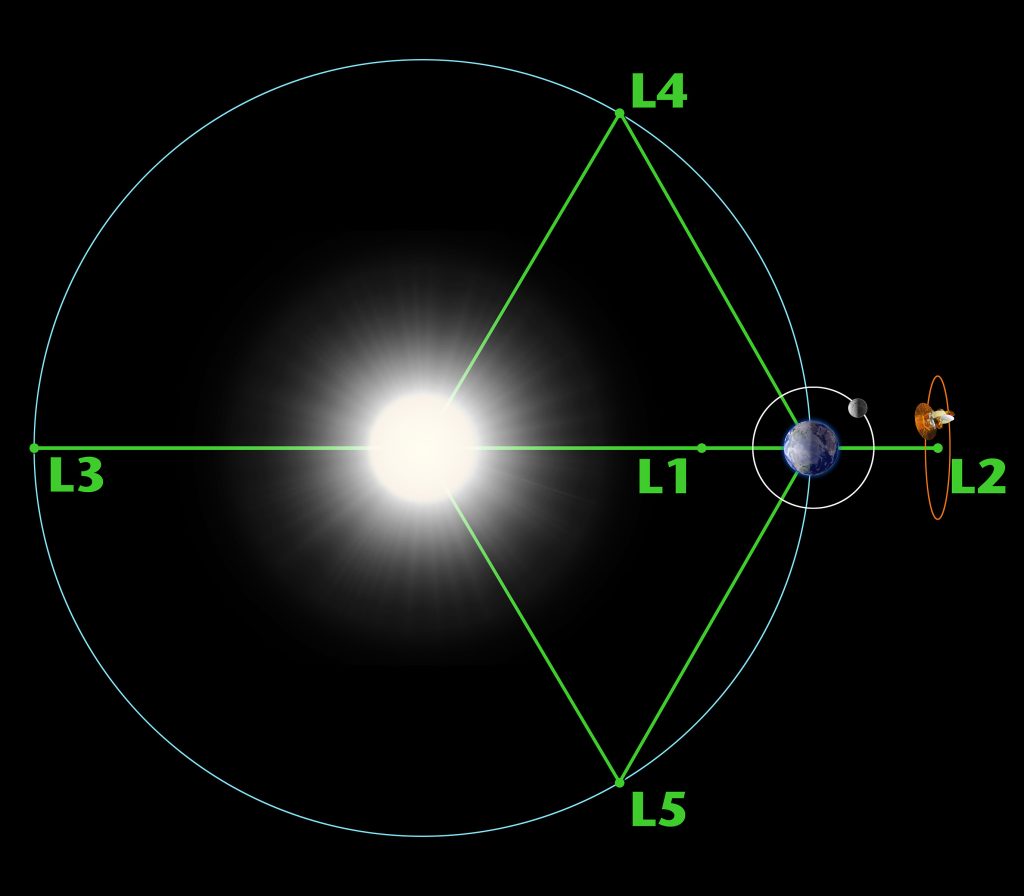Contents
- Young India’s aspirations, worries
- James Webb Telescope seeks to unlock universe’s secrets
Young India’s aspirations, worries
Context:
A recent report after interviewing over 6000 youths offers insights on their career aspirations, job preferences and expectations, their opinions on institutions of kinship, and their mental health.
Relevance:
GS-III: Indian Economy (Human Resource, Unemployment and associated issues, Growth and Development of Indian Economy)
Dimensions of the Article:
- Occupation status of India’s Youth
- Employment status of India’s Youth
- Opinions on Marriage
- Views on Mental health
- Challenges in realising youth potential
Occupation status of India’s Youth
- Currently, two-fifths (39%) of India’s Youths identify themselves as students which is up by 7% since 2016 and 26% since 2007.
- While more young men (39%) compared to young women (11%) are working, a higher proportion of young women (42%) are studying than young men (36%).
- Age shows a clear relation with occupation – 4 out of 5 youth from the youngest cohort were studying and only 4% were earning, while almost half of the youth in the 18-24 group were studying and only 1 in 5 were earning (indicates increased enrollment in higher education).

Employment status of India’s Youth
- More than half (55%) said they would prefer a government job – a quarter (24%) would prefer to start their own business.
- If we compare these with findings from youth studies in 2007 and 2016, they indicate changing priorities – In 2016, 65% preferred government jobs, which was just 3% higher than the number in 2007.
- There is a rising aspiration among the youth to start their own business.

Opinions on Marriage
- Many youth are now marrying at a later age than before – the proportion of married youth has decreased by 13% since 2007 and 5% since 2016.
- Youth also show a greater acceptance for the idea of inter-caste marriage than for inter-religious marriage – While 61% supported inter-caste marriage and 30% opposed it, there is limited empirical evidence of this aspiration being translated into reality. The support for inter-faith marriage is still not widely accepted, with 45% of the youth favouring it and 42% opposing it.
Views on Mental health
- According to the study – Family’s financial security worried the youth the most, followed by their own health. Over 56% of the surveyed youths worried about their jobs, and more than half 54% about their physical appearance.
- Those with high exposure to social media were found to be more emotionally distressed than those with low or no exposure.
- Close to two in ten (21%) youths had suicidal thoughts.

Challenges in realising youth potential
- India’s underfunded education system is inadequately equipped to provide the skills young people need to take advantage of emerging employment opportunities – according to the World Bank, public expenditure on education constituted only 3.4% of GDP in 2020.
- Child marriage, gender-based violence, their vulnerability to abuse and trafficking, especially if primary caregivers fall ill or die. All these issues restrict young women to achieve their full potential.
- The main contributor in India’s GDP is the service sector which is not labour intensive and thus adds to jobless growth. Further about 50% of India’s population is still dependent on agriculture which is notorious for underemployment and disguised unemployment.
- Further high levels of hunger, malnutrition, stunting among children, high levels of anaemia among adolescent girls, poor sanitation etc., have reduced the productivity of India’s youth in realising their potential.
Way Forward
- Skill Development programmes are needed to increase employability of the young population – India’s labour force needs to be empowered with the right skills for the modern economy.
- If India wants to leverage the economic potential of its youth bulge, then it must invest in improving social infrastructure.
- To address the mental health of adolescents, the Health and Education Ministries should strengthen outreach via existing helplines and by enabling conversations on critical issues regarding their reproductive and sexual health.
- The policies for empowerment of youth and their effective implementation will ensure that demographic dividend, which is a time-limited opportunity, becomes a boon for India.
-Source: Indian Express
James Webb Telescope seeks to unlock universe’s secrets
Context:
NASA has launched the James Webb Space Telescope (JWST) on December 24, 2021. NASA says Webb is not Hubble’s replacement – rather, its successor whose science goals were motivated by the results from Hubble.
Relevance:
GS-III: Science and Technology (Space Technology)
Dimensions of the Article:
- NASA’s James Webb Space Telescope (JWST)
- How is the James Webb better than the Hubble?
NASA’s James Webb Space Telescope (JWST)
NASA’s James Webb Space Telescope (JWST), the largest and most powerful space telescope ever built, is widely expected to unveil many secrets of the universe, particularly those related to the formation of stars and galaxies in the early period — the first few hundred million years — after the Big Bang.
Time machine in space
- Powerful space telescopes, like JWST or the Hubble Telescope, are often called time-machines because of their ability to view very faraway objects.
- The light coming from those objects, stars or galaxies, which is captured by these telescopes, began its journey millions of years earlier.
- Essentially, what these telescopes see are images of these stars or galaxies as they were millions of years ago.
- The more distant the planet or star, the farther back in time are the telescopes able to see.
- Images and data sent by Hubble, which has been in operation since 1990, orbiting the Earth at 570 km, form the basis for much of our understanding of the early universe and the formation and destruction of planets, stars and galaxies.
- It has seen deeper into the universe than any other instrument and taken the most iconic photographs of stars and galaxies.
How is the James Webb better than the Hubble?
- JWST is much more powerful and has the ability to look in the infrared spectrum, which will allow it to peer through much deeper into the universe, and see-through obstructions such as gas clouds.
- As electromagnetic waves travel for long distances, they lose energy, resulting in an increase in their wavelength. An ultraviolet wave, for example, can slowly move into the visible light spectrum and the infrared spectrum, and further weaken to microwaves or radio waves, as it loses energy.
- Hubble was designed to look mainly into the ultraviolet and visible regions of the electromagnetic spectrum. JWST is primarily an infrared telescope, the first of its kind.

Engineering marvel and Lagrange point where JWST is placed
- JWST will also be positioned much deeper into the space, about a million miles from Earth, at a spot known as L2 (L2 is a position directly behind Earth in the line joining the Sun and the Earth). It is one of the five points, known as Lagrange’s points, in any revolving two-body system like Earth and Sun, where the gravitational forces of the two large bodies cancel each other out.
- Objects placed at these positions are relatively stable and require minimal external energy to keep themselves there.
- It would be shielded from the Sun by the Earth as it goes around the Sun, in sync with the Earth.
- JWST has one large mirror, with a diameter of 21 feet (the height of a typical two-storey building), that will capture the infra-red light coming in from the deep universe while facing away from the Sun.


-Source: Indian Express




